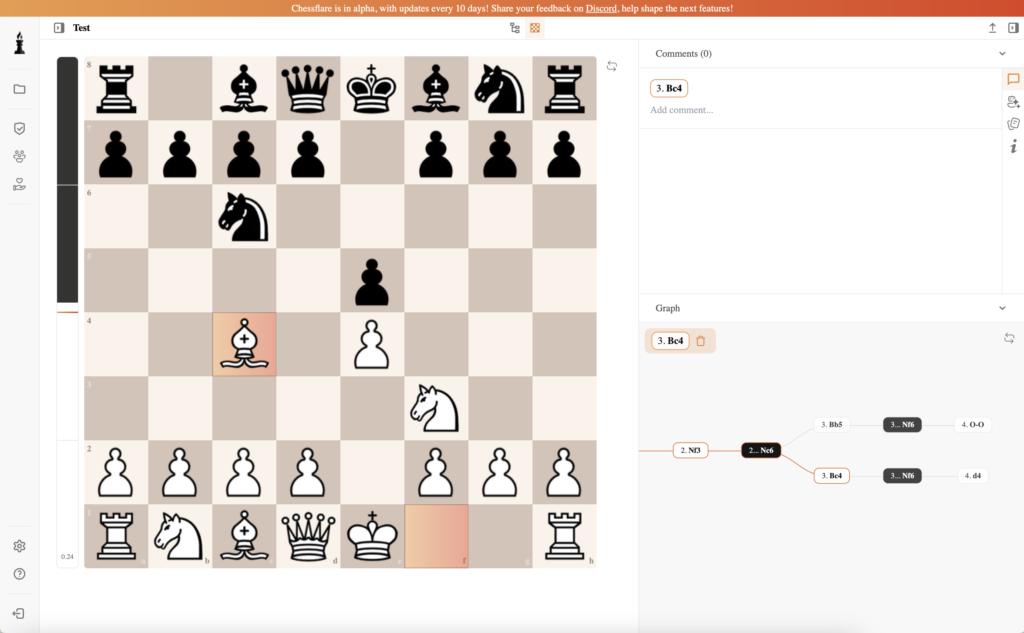The Hypermodern School of chess emerged in the early 20th century as a revolutionary approach that challenged the established principles of the Classical School. Rather than occupying the center with pawns in the opening, hypermodern players advocated controlling it indirectly with pieces, allowing for greater flexibility and counterplay.
Origins and Philosophy
The Hypermodern School arose as a reaction to the rigid structures of classical chess, which emphasized direct occupation of the center with pawns. Innovators like Aron Nimzowitsch, Richard Réti, and Gyula Breyer introduced new strategic ideas that questioned traditional opening principles.
The key principles of Hypermodern chess include:
- Indirect Control of the Center: Instead of occupying the center with pawns, hypermodern players preferred to control it from a distance with pieces such as bishops and knights.
- Flank Openings: Many hypermodern openings begin with moves like 1.Nf3 or 1.g3, allowing for flexible piece development before committing to a central pawn structure.
- Provoking Weaknesses: Hypermodern players often allowed opponents to establish an imposing central structure, only to undermine it later with timely pawn breaks and counterattacks.
- Dynamic Play: Flexibility and adaptability were key aspects, enabling players to adjust their plans based on the opponent’s setup.
Key Openings of the Hypermodern School
The Hypermodern School introduced several groundbreaking openings that remain vital in modern chess. These openings prioritize piece activity and long-term strategic planning.
Réti Opening
The Réti Opening (1.Nf3 followed by c4 and g3) embodies hypermodern principles by controlling the center with pieces rather than pawns. White delays direct central occupation, focusing on fluid development and flexible plans.
Alekhine’s Defense
Alekhine’s Defense (1.e4 Nf6) is a provocative hypermodern response to 1.e4. Black invites White to advance central pawns, aiming to later undermine them with tactical counterplay.
Grünfeld Defense
The Grünfeld Defense (1.d4 Nf6 2.c4 g6 3.Nc3 d5) allows White to establish a strong central pawn presence before Black actively challenges it with pawn breaks and piece pressure.
King’s Indian Defense
The King’s Indian Defense (1.d4 Nf6 2.c4 g6) is a classic hypermodern setup where Black allows White to occupy the center early, preparing to launch a counteroffensive with pawn thrusts and dynamic piece play.
The Pioneers of the Hypermodern School
Several great players were instrumental in shaping the Hypermodern movement, advocating new ideas that forever changed chess strategy.
Aron Nimzowitsch
Aron Nimzowitsch was one of the most influential hypermodern thinkers. His book My System introduced key concepts such as overprotection, prophylaxis, and blockade. He demonstrated how indirect control and maneuvering could outplay even the strongest classical strategies.
Richard Réti
Richard Réti developed many hypermodern opening ideas and famously defeated World Champion José Raúl Capablanca with the Réti Opening, proving the effectiveness of indirect central control.
Savielly Tartakower
A creative and dynamic player, Tartakower helped popularize hypermodern ideas, blending them with tactical ingenuity and psychological warfare.
Alexander Alekhine
Though not exclusively a hypermodern player, Alekhine’s aggressive and flexible style embraced many hypermodern principles. His namesake defense remains a prime example of hypermodern counterplay.
The Evolution of Hypermodern Chess
Hypermodern principles have been fully integrated into modern chess strategy. Today, players recognize that occupying the center is not always necessary and that flexibility is key to success. Openings like the Grünfeld and King’s Indian are played at the highest levels, proving the enduring relevance of hypermodern ideas.
Many of today’s top players, including Magnus Carlsen and Hikaru Nakamura, use hypermodern strategies to outmaneuver opponents in complex positions. The balance between classical central control and hypermodern piece activity defines modern chess.
Legacy of the Hypermodern School
The Hypermodern School transformed chess by expanding the strategic possibilities of the game. It broke away from rigid classical teachings, introducing dynamic and flexible ideas that remain at the core of contemporary chess.
Through the contributions of Nimzowitsch, Réti, and others, hypermodern principles have become essential tools for players at all levels. The ability to challenge central control, provoke weaknesses, and adapt to different structures continues to shape modern opening theory and middle-game play.
Conclusion
The Hypermodern School was a revolutionary movement that reshaped chess strategy. By advocating indirect central control, flexibility, and dynamic counterplay, it provided new ways to approach the game. Its impact is still evident in the games of modern grandmasters, proving that its principles remain as relevant as ever.

